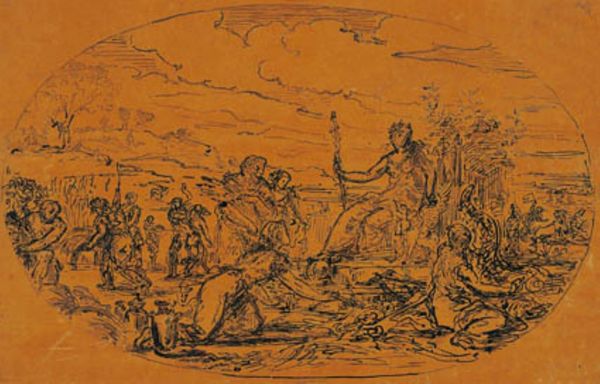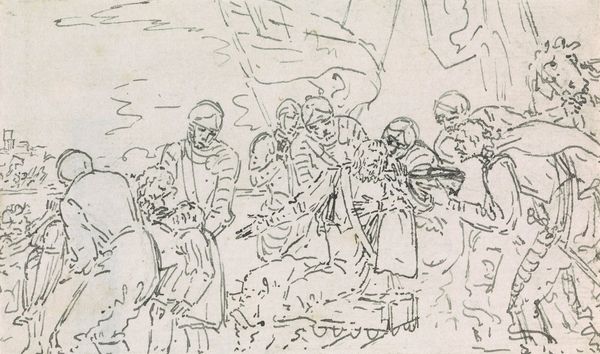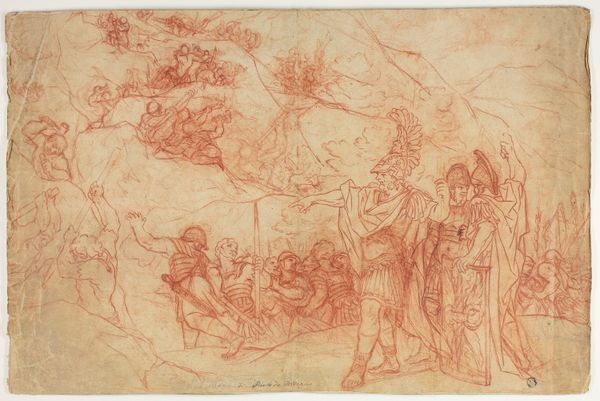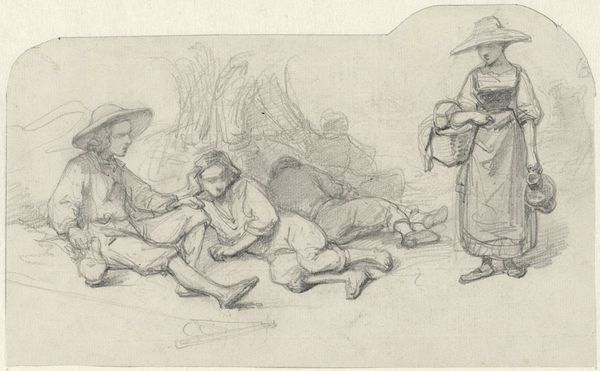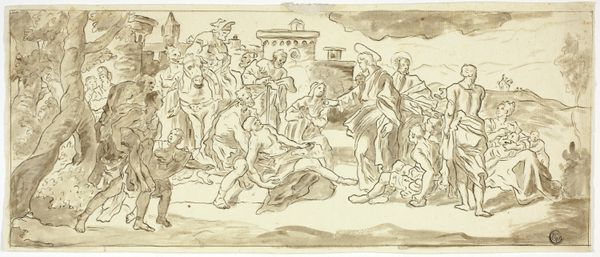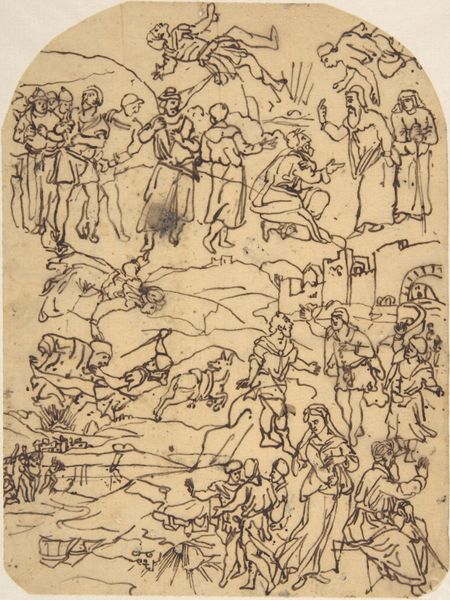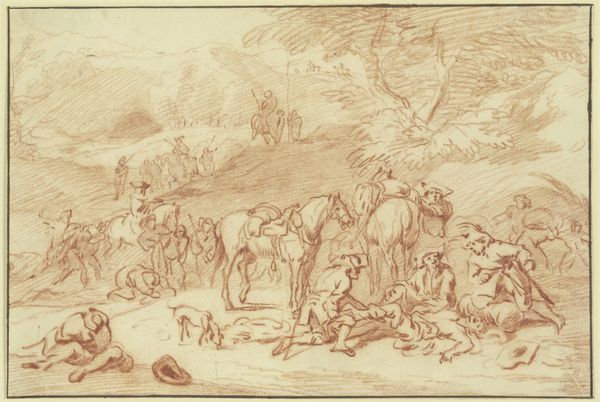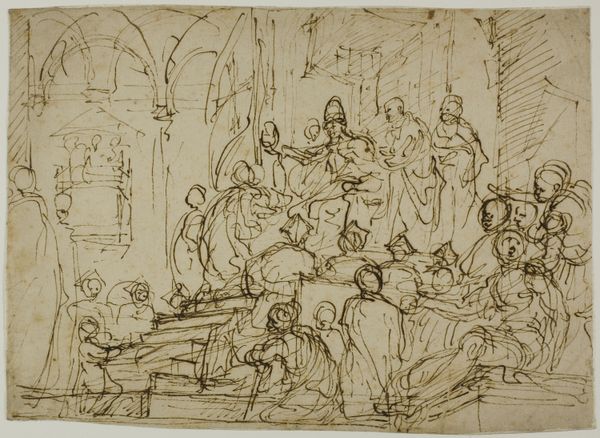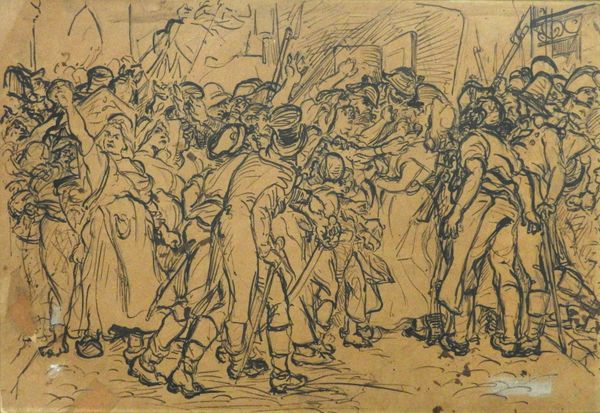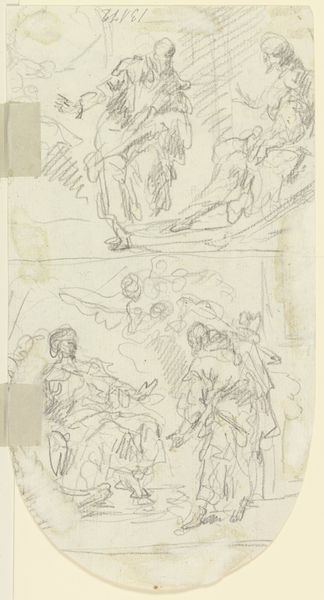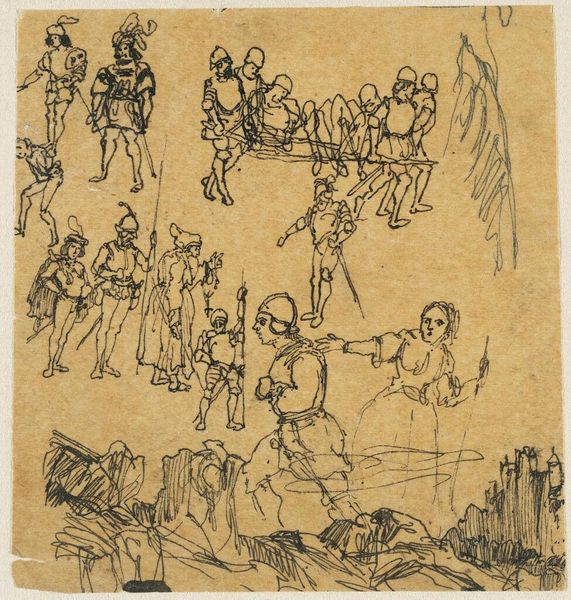
drawing, charcoal
#
portrait
#
drawing
#
narrative-art
#
baroque
#
figuration
#
charcoal
Copyright: Public domain
Curator: This sketch in sanguine chalk is Rembrandt van Rijn's "Susanna and the Elders," created in 1634. It depicts a key moment from the apocryphal story in the Book of Daniel. Editor: My initial feeling is one of tense anticipation. The red chalk lends the scene an urgency, almost a flush of embarrassment, appropriate for such an invasion of privacy. The sketchy lines amplify the surreptitious mood. Curator: Indeed, Rembrandt frequently explored this narrative. We see Susanna bathing in her garden, surprised by the elders who threaten to falsely accuse her of adultery if she refuses their advances. It's a powerful exploration of virtue, vulnerability, and abuse of power that resonated deeply in 17th-century Dutch society. Editor: Note how the foliage around Susanna seems almost predatory, clawing toward her. And the positioning of the elders, half-hidden but clearly present, echoes themes of hidden danger, guilt and judgement that weave through Western art history. This use of concealing elements taps into a potent fear of being watched, being judged, or being wrongly accused. Curator: Absolutely, it’s not just the overt biblical narrative; the theme of righteous, independent women being subjected to false claims and power struggles was constantly relevant, impacting actual societal power structures beyond purely theological debates. How does it influence our understanding of Dutch ideas around justice? Editor: It reflects enduring cultural anxieties, still bubbling beneath the surface today. Think about our contemporary anxieties related to privacy, particularly for women—echoes of this scene play out constantly in popular consciousness. It's the potency of a theme that helps make a sketch from 1634 feel urgently relevant today. Curator: It's a striking example of how artistic interpretations of biblical stories can serve as barometers for the cultural and ethical climates of their time, pushing us to reconsider the very fabric of societal morality. Editor: Definitely, the symbol speaks volumes far beyond a literal depiction. The story's symbolism resonates powerfully with fundamental narratives around power dynamics, vulnerability, and judgment.
Comments
No comments
Be the first to comment and join the conversation on the ultimate creative platform.

